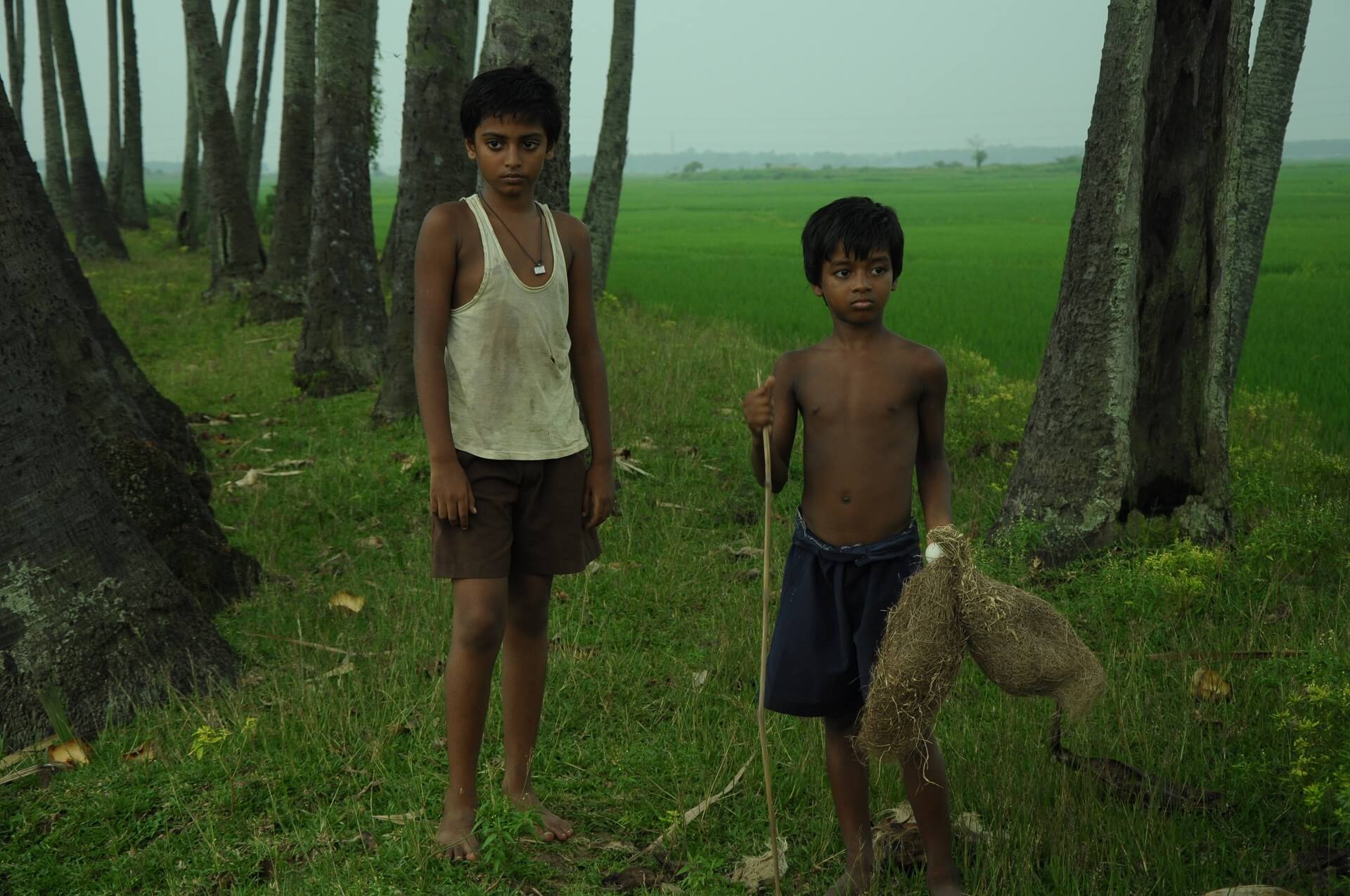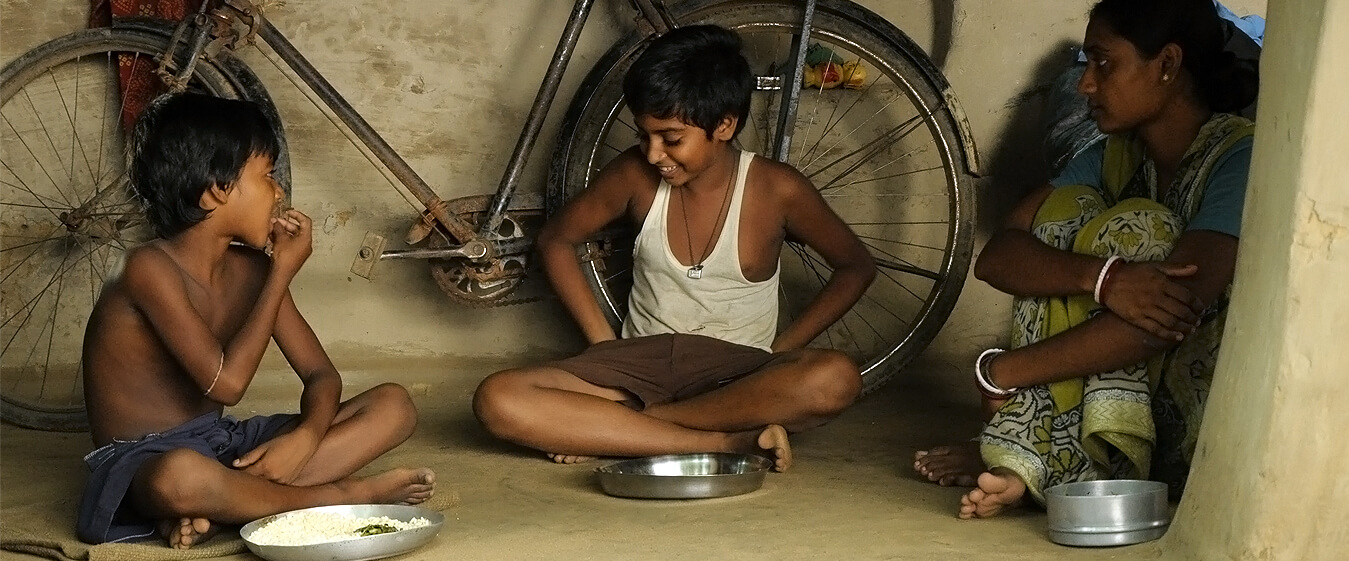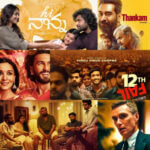-
Critics Rating - 9.0/109/10
Sahaj Paather Gappo
(Colours of Innocence)
The popular adage goes : Do not wield an axe, when a doctor’s scalpel would suffice. This is especially relevant for cinematic ambitions nowadays. Most people end up overdoing stuff, leading to an untidy visual product. This stems, perhaps, from a distorted or misconceived vision, or from a faulty channelization of that vision. In the world of children’s literature, Bibhutibhushan Bandyopadhyay’s contribution is undeniable and immeasurable. Debutante director Manas Mukul Pal adapts Bandyopadhyay’s ‘Talnobomi’ for the screen and delivers at the same time, a poignant and didactic narrative, coupled with visual delights. How wonderfully has he portrayed rural Bengal with all its constituent elements : picturesque landscapes, ebullient streams, poverty-stricken villagers as well as that one archetypal rich household in Sahaj Paather Gappo.

Two little boys, Gopal and Chotu, belong to a penurious household, with a paralyzed father. Financial inadequacy has left their mother disturbed and cranky. The family barely manages to make ends meet, does not manage two square meals, and the younger kid Chotu keeps craving for more food, almost oblivious to his family’s economic condition. This brings me to the first takeaway from the movie. Want for food. Considered to be a basic necessity to sustain life, Pal brilliantly depicts how lack of food, coupled with unadulterated innocence, leads to vivid gastronomic imaginations and desires. The rich household in the village organises a lavish traditional puja, in which it invites all the villagers, who devour the scrumptious food on offer. Learning this, Chotu starts building castles in the air, and lets his fantasies get the better off him.
Apart from this, the bondage between two brothers is my second takeaway from this film. Amidst the financial tempest they were going through, along with dysfunctional parents, it was as if, each other’s company salvaged both the brothers from languish, and their care and assiduity for each other helped them scrape through this tumultuous time. It was not only Gopal, the elder one, caring for his younger brother, but it was also the other way round. When Gopal angrily leaves without eating, Chotu brings him guavas and lovingly asks him to eat them. Such a beautiful portrayal of relationship is an achievement in its own right, and lends the film a humane touch.

That poverty is almost an eternal companion of many in rural districts, is put forward in this film. Not only does inextricable poverty make the people suffer, but also ostracises them from society – a society in which economic apartheid is still rampant and hideously prevalent. All of Chotu’s cravings and expectations of being invited for the grand feast, come to naught, ostensibly because his father is a poor van driver. It was as if they were not even existent on the demographic map of the village because of their social status. But, the fact that even in the midst of social insecurity, a boy dares to dream. Dreams have no boundaries. Chotu dreams of food, while Gopal dreams of grotesque realities which might fan out anyday. Gopal’s dream sequence was a horrid one, brilliantly shot, and had a terrible effect on the audience.
You may also like: Mukti Bhawan Movie Review | Salvation comes with Hotel Salvation!
Sahaj Paather Gappo is a film which is as important as it is artistically magnificent. Poverty and society might paint an individual black and white, but the colours of innocence always remain vivid and conspicuous.















Add Comment